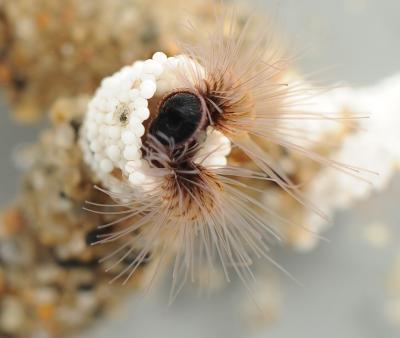Scientists have succeeded in imitating the natural glue secreted by a tiny marine creature called the "sand palace worm" in order to use it as a medical glue for bone fusion

Scientists have succeeded in imitating the natural glue secreted by a tiny marine creature called the "sand palace worm" following their long-standing pursuit to develop a medical glue needed to fuse broken bones as a result of injuries from battlefields, car accidents and other accidents.
"This bioadhesive is based on a complex combination of a brilliant but hitherto unexplored idea for making injectable adhesives," says Dr. Russell Stewart. "The idea of using adhesives derived from nature in the fields of medicine is an old one and first began with studies of adhesives intended for muscles and conducted in the XNUMXs. And yet, almost thirty years later, there are no natural adhesives in medicine."
The traditional method of fusing broken bones is to use mechanical fasteners such as nails, pins and metal screws for support until they can heal and bear a person's weight again. However, achieving and preserving the arrangement of small bone parts using screws and metal wires is extremely challenging, explains the researcher. For the precise reconstruction of small bones, health researchers have already recognized the fact that biodegradable and biocompatible adhesives can be valuable because they will reduce the use of metallic materials in the body while preserving the proper arrangement for fracture fusion.
The researchers were able to replicate the glue that the sand castle worms (Phragmatopoma californica) use while building their home between the tides by stacking together grains of sand and shell fragments found on the beach. This marine worm had to overcome several adhesive challenges to create an underwater home for itself, and its ingenuity served as an effective recipe for the research team in developing the synthetic adhesive.
The challenge the researchers faced was the design of a water-based adhesive that remains insoluble in humid environments and is capable of sticking wet objects together. The team is also required to give their opinion on the exact details of the natural glue's solidification process - bad timing of the glue's hardening will make it worthless, explained the lead researcher. In order to overcome these bumps, the researchers first studied the behavior of the glue in the face of changes in its pH values - a mechanism that was copied to the synthetic glue.
The new glue, explains the researcher, a bioengineer at the University of Utah in Salt Lake City, has undergone toxicity tests in cell cultures. The innovative glue is at least as strong as the commercial glue known as "Super Glue" and twice as strong as the natural glue on which it is based, the researcher notes.
"We recognized the fact that the mechanism used by this worm is really a perfect means of making underwater glue," says the researcher. "This glue, just like the worm's glue, is a liquid substance that, although it does not mix with water, is water soluble."
The researchers have started running experiments focusing on the transfer of biologically active substances in the glue that will allow them to heal bone fractures while inserting them into the areas of the fractures, such as: antibiotics, pain relievers or recovery catalysts.
"We are very optimistic about this synthetic adhesive," he said. "Biologically adapted materials are one of the main challenges in preparing adhesives like this. Any time you inject an artificial substance into the body, there is a risk that the body will reject it and cause tissue damage. Until now, we have not seen that our glue causes this."

One response
The title should be changed... "Medical glue that imitates the slime of worms"... "Effective against worms" sounds rather strange.
The glue itself sounds quite interesting. You need a police officer in motorcycle accidents. 😛